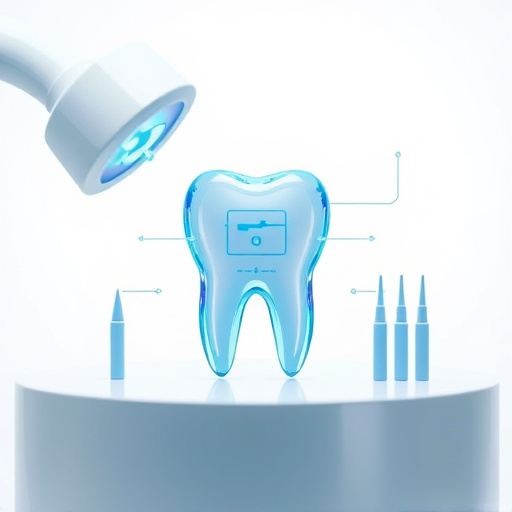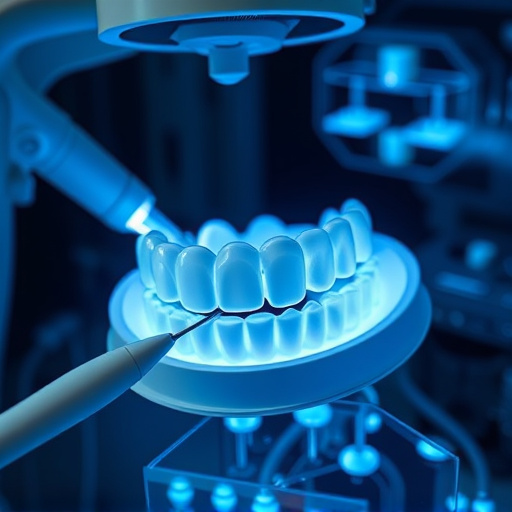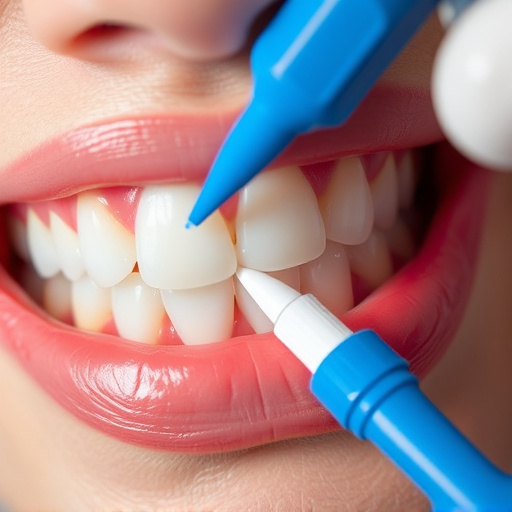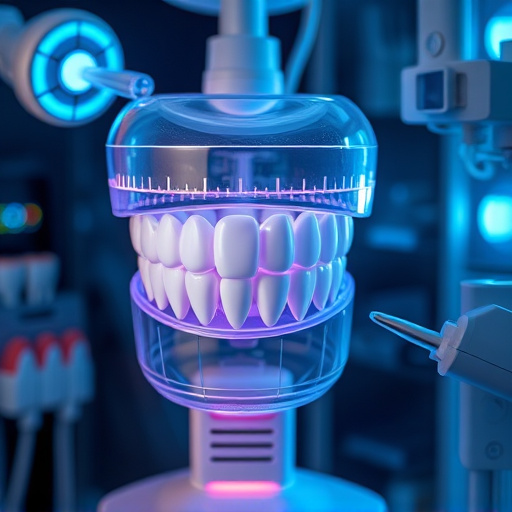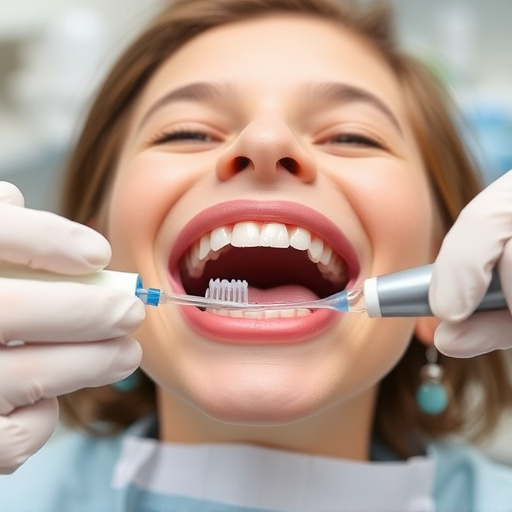Periodontal disease, starting as gingivitis and progressing to periodontitis, is a severe oral health issue that can lead to bone and tissue loss, tooth mobility, and extractions. Early-stage diseases are managed with teeth cleaning and clear aligners, while advanced cases require periodontal therapy treatment to regenerate bone and tissue. This comprehensive approach involves deep cleaning, scaling, and root planing to remove bacterial plaque and tartar buildup, combating inflammation and encouraging tissue regeneration. Periodontal therapy also integrates with cosmetic dentistry to restore structural integrity and aesthetic appeal, aiming for long-term stability and comfort by preventing gum recession and bone loss.
Periodontal disease, often overlooked, can lead to significant bone loss around teeth. This isn’t just an oral health concern; it impacts overall well-being. Understanding the connection between periodontal disease and bone support is crucial for effective dental care.
Periodontal therapy treatment offers a game-changing approach to restoring oral health. By targeting gum inflammation and infection, this comprehensive therapy not only stops bone loss but also promotes healing. The long-term benefits include maintaining robust bone structures, ensuring dental stability, and preserving overall mouth health. Discover how periodontal therapy works its magic in supporting teeth for years to come.
- Understanding Periodontal Disease and Its Impact on Bone Support
- The Role of Periodontal Therapy in Restoring Oral Health
- Long-Term Benefits: How Periodontal Treatment Maintains Bone Structure and Dental Stability
Understanding Periodontal Disease and Its Impact on Bone Support

Periodontal disease, often referred to as gum disease, is a silent yet severe condition that can significantly impact oral health. It begins with inflammation and infection in the gums, known as gingivitis, which, if left untreated, progresses to periodontitis. This advanced stage involves not only gum damage but also the destruction of bone and connective tissue that supports teeth. Over time, this deterioration leads to tooth mobility and, in severe cases, tooth extractions.
The impact of periodontal disease on bone support is profound. Teeth are held in place by a complex structure of bones, gums, and ligaments. When gum disease erodes these structures, it weakens the foundation of teeth. Regular teeth cleaning and other dental procedures like clear aligners can help manage and reverse early-stage periodontal disease. However, more advanced cases may require periodontal therapy treatment to regenerate bone and tissue, ensuring long-term stability and health for teeth and gums.
The Role of Periodontal Therapy in Restoring Oral Health

Periodontal therapy treatment plays a pivotal role in restoring oral health by addressing the underlying causes of gum disease. It involves a meticulous process that includes deep cleaning, scaling, and root planing to remove bacterial plaque and tartar buildup from above and below the gumline. This comprehensive dental care approach not only fights inflammation but also promotes tissue regeneration, effectively halting bone loss and gum recession.
By combining advanced techniques with tailored treatment plans, periodontal therapy works synergistically with cosmetic dentistry procedures like dental crowns to restore structural integrity and aesthetic appeal. The goal is to create a balanced oral ecosystem where teeth are securely anchored in healthy bone, ensuring long-term stability and comfort for patients. This holistic approach to oral health goes beyond addressing symptoms; it empowers individuals to maintain optimal dental health well into the future.
Long-Term Benefits: How Periodontal Treatment Maintains Bone Structure and Dental Stability

Periodontal therapy treatment offers long-term benefits that extend far beyond simply improving oral aesthetics. By addressing gum disease at its root, this specialized care focuses on maintaining and even rejuvenating the bone structure that supports our teeth. This is particularly crucial for preserving dental stability, as gum recession and bone loss are often silent yet devastating consequences of periodontal issues.
Regular periodontal therapy goes beyond routine dental cleanings. It may involve procedures such as wisdom tooth removal to alleviate pressure on adjacent teeth and gums, or turn to cosmetic dentistry techniques to restore damaged areas and enhance smile aesthetics. Ultimately, the goal is to create a strong foundation for long-term oral health, ensuring that smiles remain functional, comfortable, and beautiful for years to come.
Periodontal therapy treatment is a game-changer in oral healthcare. By addressing the root cause of periodontitis, this comprehensive approach not only restores oral health but also provides long-term benefits for bone support and dental stability. Understanding the impact of periodontitis on bone loss and leveraging the power of periodontal therapy can help folks maintain a vibrant, healthy smile for years to come.







